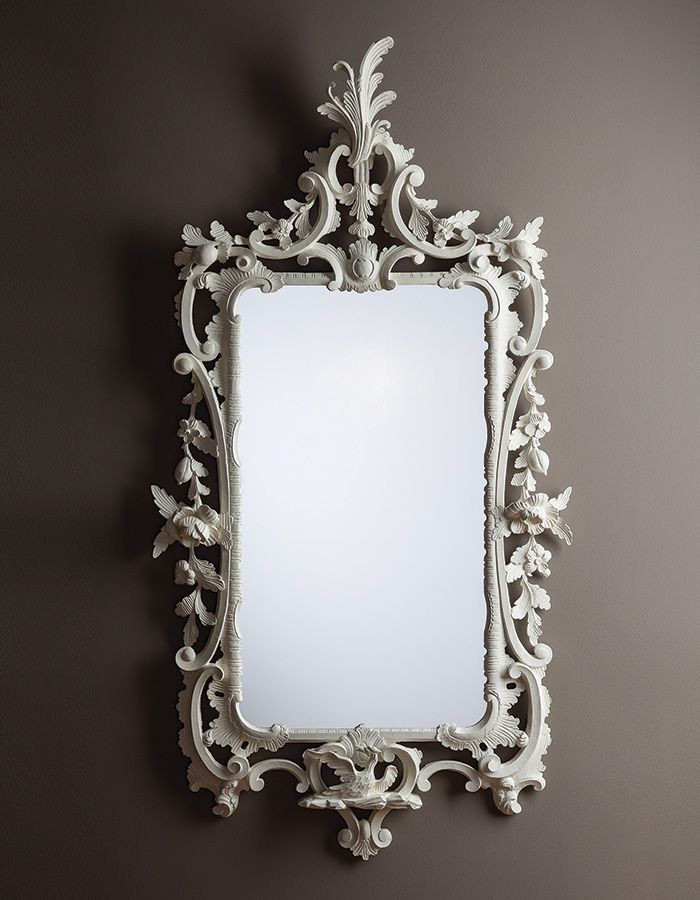Reflections on Rococo
You might think that there's nothing left for Allan Breed to learn about carving. You'd be wrong.
Synopsis: You might think that there’s nothing left for Allan Breed to learn about carving. You’d be wrong. This 5-ft. Rococo looking glass, for example, was a revelation.
Allan Breed, who carves with mesmerizing fluidity, has been building American period furniture for nearly 50 years and teaching his craft for more than 30. Yet he’s still learning. Carving this 5-ft.-tall looking glass, which re-creates a white painted pine one made in Philadelphia in 1770, was for him a revelation in the Rococo style. Examining the original at the Metropolitan Museum of Art in New York, he found it at first “dauntingly complex.” But he says that partway through carving it, “I suddenly realized what this guy had been doing—that all the complicated carving was actually completely modular and predictable.” Breed saw that in its essence the design was about opposition: a textured leaf beside a smooth one, a dished leaf beside a pillowed one, a convex form beside a concave one. “And if you erase the leaves and foliage,” he said, “you have opposing C-scrolls that chase each other around the frame; they’re the basic grid that the design is built on.” He also noted that the original had been carved at speed with large tools. “This kind of carving can’t be labored over and chipped away at. It has to look spontaneous and quick. I learned a ton by doing that mirror—I’d like to carve another!”
— Jonathan Binzen
 |
The Modern Master: Allan Breed |
 |
How to Think Like a Carver |
 |
Customize Your Carving Tools |
Fine Woodworking Recommended Products

Dividers


Circle Guide






















Log in or create an account to post a comment.
Sign up Log in